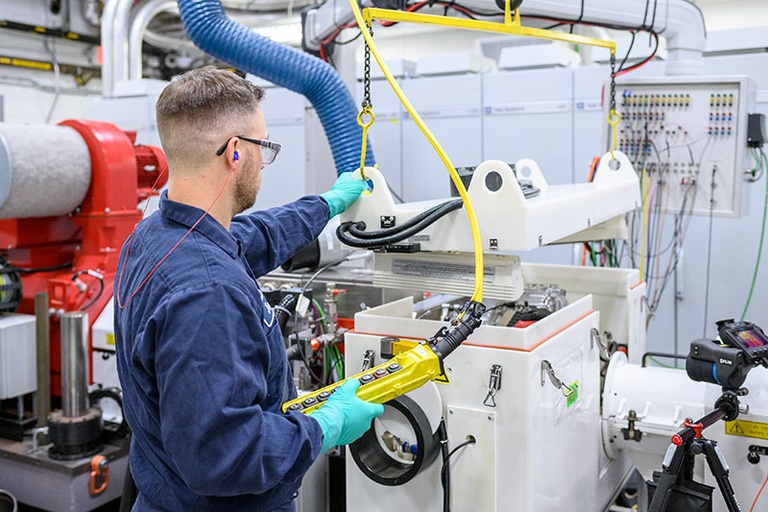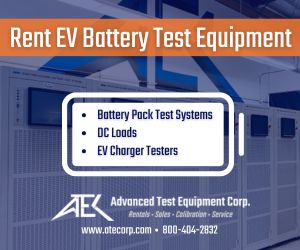EV lubricants are becoming more important than ever with new applications such as e-axle fluids and new performance requirements. Initially, for Driveline e-fluids the primary drivers were efficiency and wear performance. However, there is now an increasing focus on heat transfer and copper compatibility requirements. All of this without sacrificing any durability performance.
In addition to focused bench and component testing, full-scale hardware testing is essential to maintain the right balance of all elements. This is especially true for system-level efficiency, thermal and durability performance. Historically, the industry has evaluated conventional lubricants in actual axles, transmissions, and engines. But as Lubrizol moved into testing Electric Drive Units (EDU), it realized that its capabilities needed to evolve. In order to achieve the goals, Lubrizol needed to ensure that it could simulate high-voltage batteries and precisely control embedded electric motors.
Join this session at our Spring Virtual Conference on EV Engineering to learn how Lubrizol significantly enhanced its three-motor transmission test stands (in the UK and the US) by adding a DC battery simulator and universal inverter motor controls. This means it has very flexible configurations, that allows testing of almost any e-device. With this added flexibility comes a significant level of complexity which will be explained through three test case studies. The test case studies cover the durability and thermal performance of a power-split dedicated hybrid transmission and the system efficiency of an e-Axle.
Other sessions at our Spring Virtual Conference include:
Ultrasonic Metal Welding Busbar Applications in EVs


Improving the efficiency, power, and capabilities of EVs vehicles can be accomplished by less mass and more space. This can be achieved by moving from round wiring to flat conductors, known as busbar, for batteries and beyond. Busbar innovation outside the battery pack is of high interest for the future, routing high power from charging inlets to batteries and out to other high-power motors and devices. There is a rising interest in busbars among all OEMs and Tier 1 suppliers, mostly for high-voltage applications. As future innovations increase the utilization of busbars outside of the battery pack, these new applications will create significant opportunities for ultrasonic welding to increase the overall quality of the future joining design in busbar architecture. Ultrasonic welding, particularly torsional welding technology, allows welding of larger size welds, gentle vibration, and ability to join harder to reach areas. These capabilities will allow further implementations of busbars outside the EV battery packs as the industry moves forward.
Join this session, where Telsonic will present challenges and solutions for busbar applications. Greg Ruscak, Telsonic’s Engineering and Applications Manager and Will Som, Senior Engineering team leader at Telsonic Solutions, Boston, Massachusetts, will provide an overview of our welding technologies and capabilities to resolve challenges for connection system with busbars in Electric Vehicles.
The presentation will explain the innovative and exclusive technology that Telsonic utilizes to provide the best quality joining solutions for future busbar architecture. The demonstrated applications will explore the capabilities of conventional ultrasonic linear welding and the exclusive Telsonic Torsional SONIQTWIST and PowerWheel technology.
Other sessions at our Spring Virtual Conference include:
Decoding UN 38.3 Transportation Testing For EV Batteries


Dangerous Goods transportation testing of Lithium Ion batteries presents multiple challenges to the EV and E-mobility industries. One of these challenges is interpreting and applying the requirements and test conditions of the 38.3 test regime.
Join this session where we will review the latest and greatest UN 38.3 requirements and answer some of the most common questions and misconceptions when testing these new large battery designs, multiple battery configurations and chemistries.
We will also focus on interpreting when a battery must be tested, and which test parameters and criteria are to be applied, and how to address new battery chemistries. These affect passenger and commercial vehicles, personal mobility and other non-road applications.
See the full session list for the Spring Virtual Conference on EV Engineering here.


Broadcast live April 17 – 20, 2023, the conference content will span the EV engineering supply chain and ecosystem, including motor and power electronics design and manufacturing, cell development, battery systems, testing, powertrains, thermal management, circuit protection, wire and cable, EMI/EMC and more.

















































